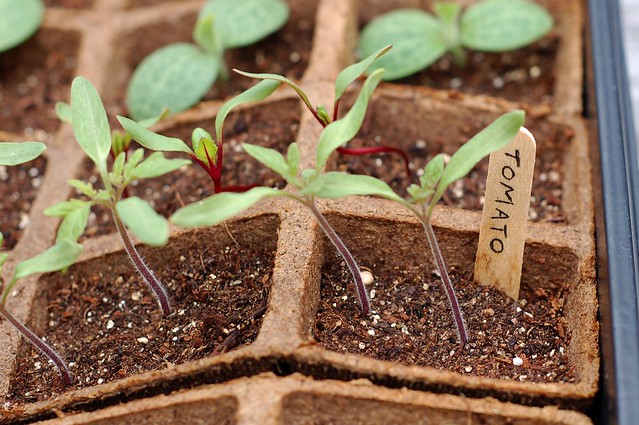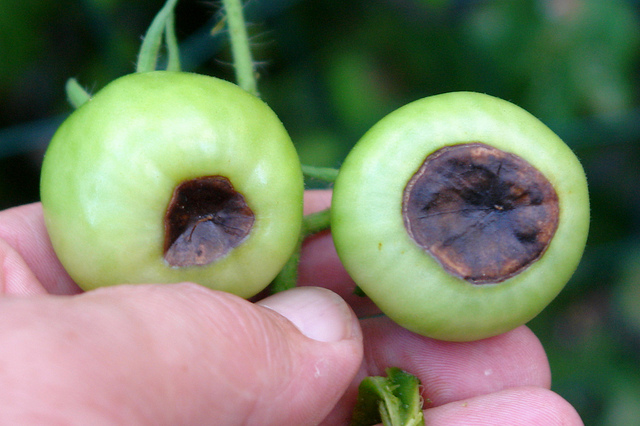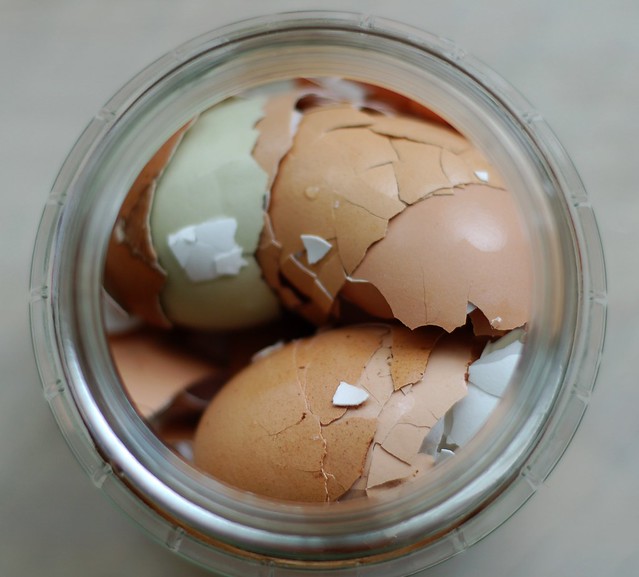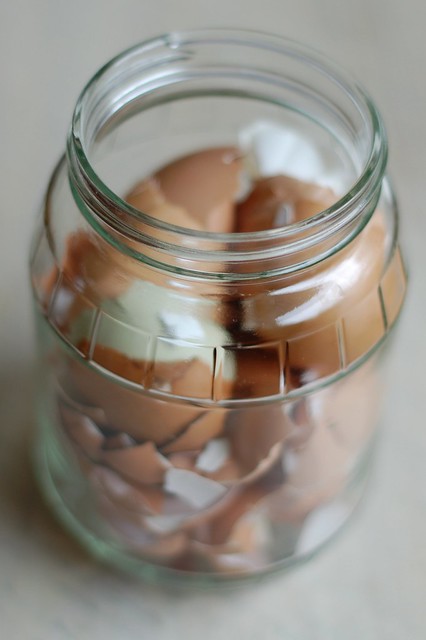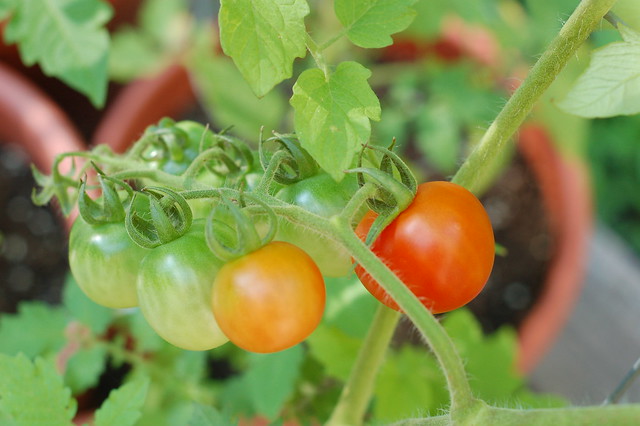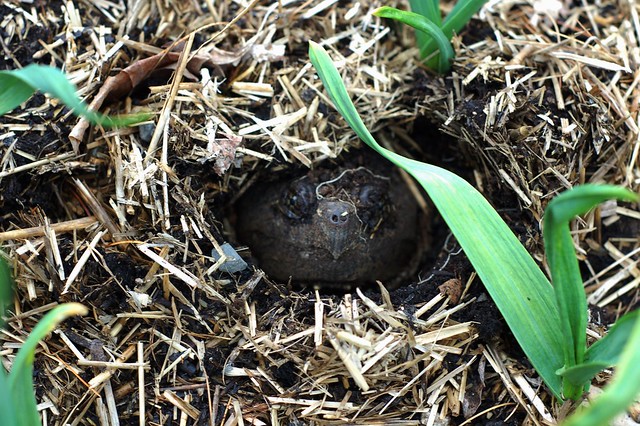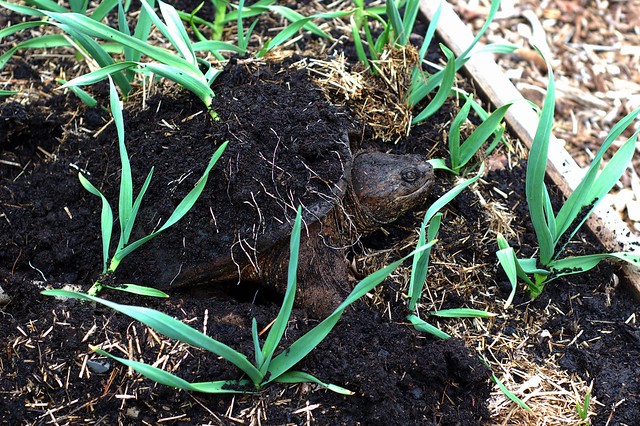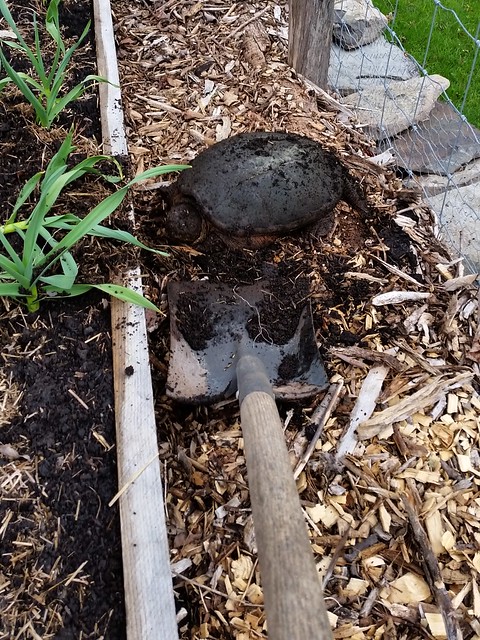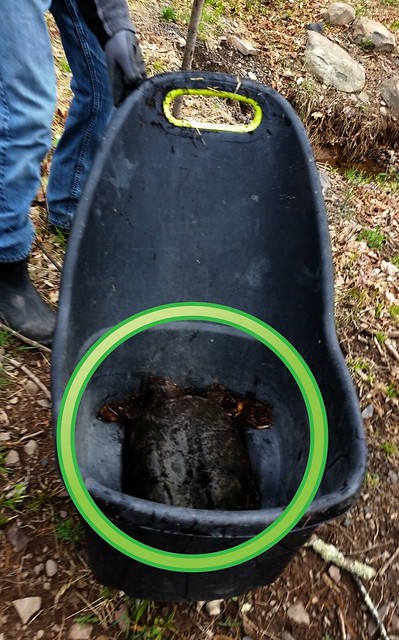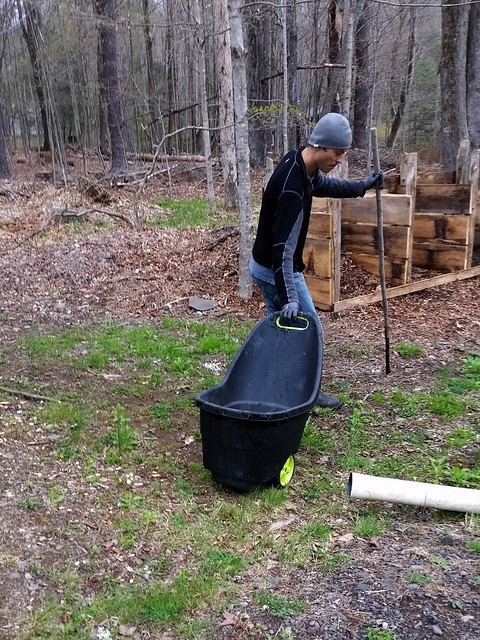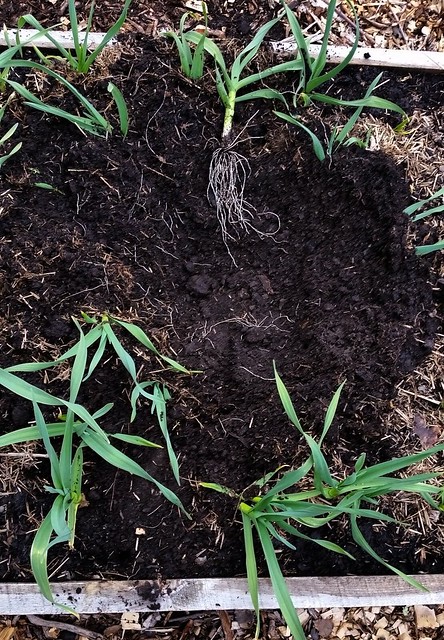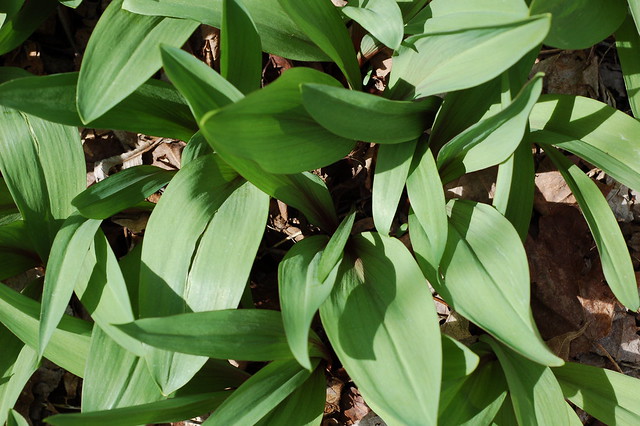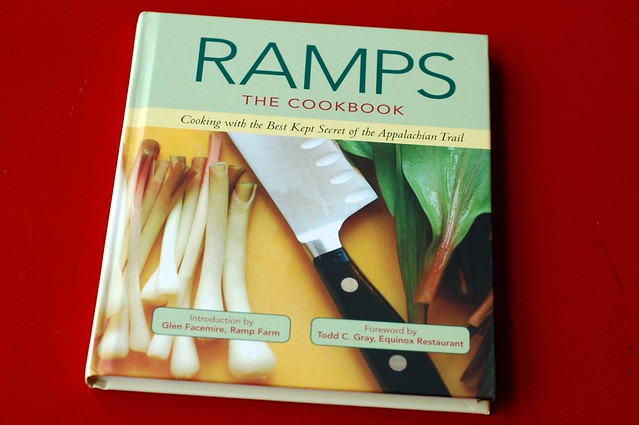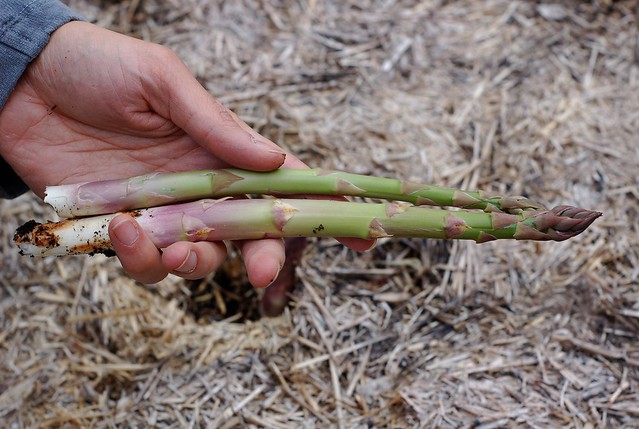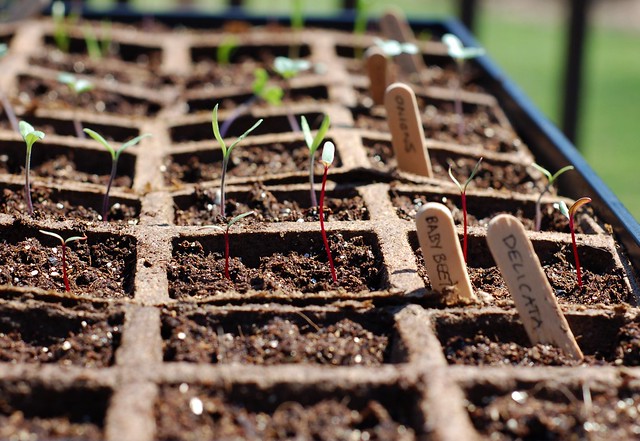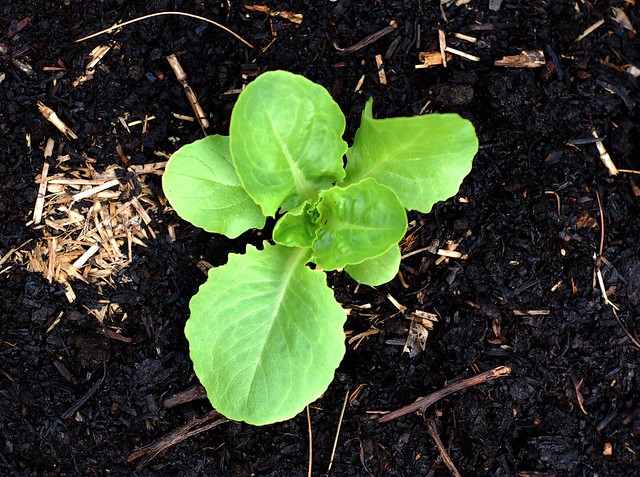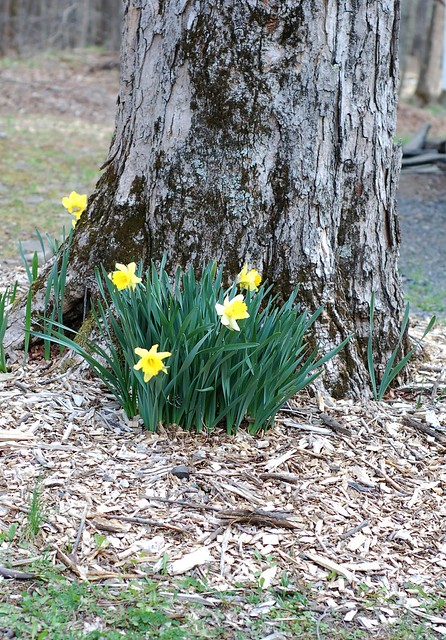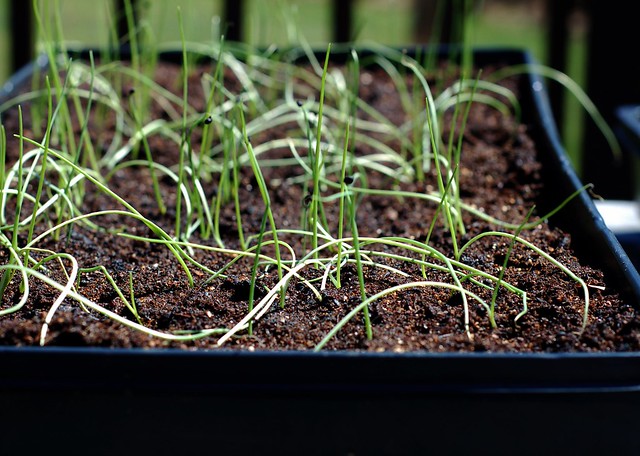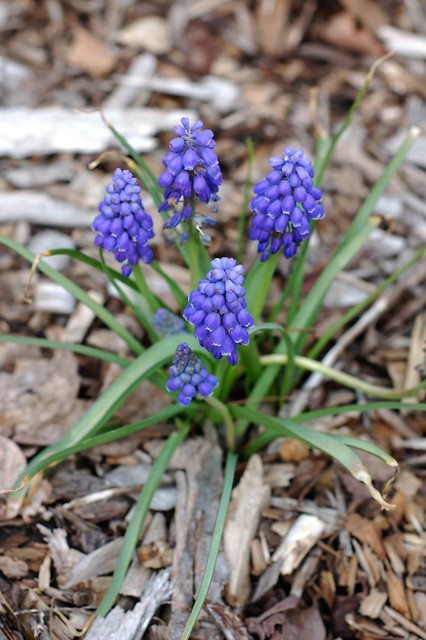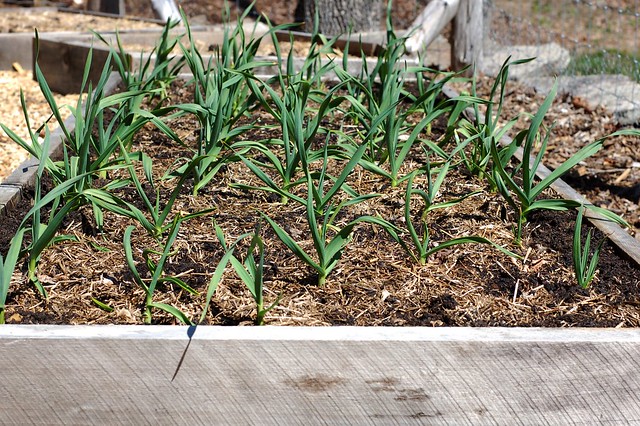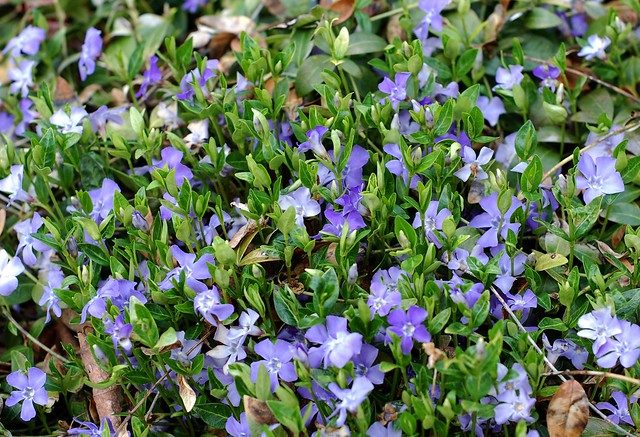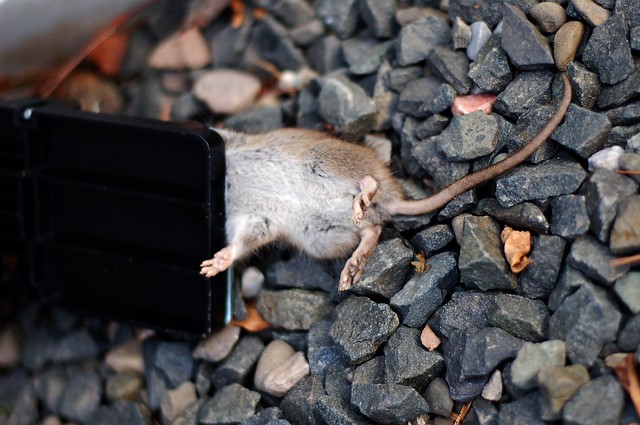For Healthier Tomato Plants, Save Your Eggshells
Friday, April 29, 2016
Picking a fat, flavorful tomato off the vine in your own garden is one of life's great pleasures. I love to hold them in my hands, feeling the warmth from the sun, sniffing their aromatic smell and feeling their slight stickiness on my skin before I take a bite.
But it's deeply discouraging when the fruits you've pampered for months and are eagerly anticipating eating begin to turn brown and rot from their tips upwards. It's called blossom end rot and is a common and easily prevented tomato ailment.
Blossom end rot is caused by a calcium deficiency which is good news, because, unlike many other tomato woes, you can avoid it.
One very simple way to protect your plants is to place a bit of crushed up eggshell in the hole before you put your tomato plant in and fill the dirt in around it. I suggest you start saving your eggshells NOW.
I'm keeping mine in a jar next to the sink to remind me not to toss them into the compost bucket and so far, it's working. You can also just put them back into the carton if you prefer. If you use a jar, leave it open to let them dry out.
When the time comes to plant your 'maters, just crush them up and pour a little into the bottom of the hole then proceed as usual. Thanks to my friend, Grian, for sharing this wonderful tip about the eggshells. More about Grian and her incredible garden here.
A few more tomato-growing tips:
1. Do not grow tomatoes in the same place more than once every three years (or longer). Rotating beds will help prevent problems from diseases like wilts and blights build up in the soil. You should also avoid planting any potatoes, eggplant, tomatillos, and chili and bell peppers in that location as they are all members of the same family of Nightshades and are also susceptible to the same pests. A good rotation would be to plant tomatoes in year one then move on to a brassica crop (cabbage, cauliflower, broccoli or brussels sprouts) the second year then some kind of beans to add nitrogen back to the soil in the third year and then an allium like onion, shallot, leek or scallion the four year. Then back to tomatoes or some other nightshade.
2. Go easy on the nitrogen. Unlike some plants, tomatoes do not need a ton of nitrogen. Too much can burn them or cause them to put out lush foliage but not many tomatoes - all leaf and no fruit. If you're using a bagged soil mix, look for one that is specifically formulated for tomatoes with higher amounts of phosphorus than nitrogen.
3. Err on the side of less water rather than more. Tomatoes are sensitive to over-watering and do quite well with very little water. In fact, some of the most delicious tomatoes I have ever eaten are the dry-farmed early girls we used to buy at the Berkeley Farmers' Market - the lack of water causes the plants to really concentrate flavors and sugars. Rather than sprinkling them every day, do a deep watering once or twice a week (depending on the weather, that is) to allow the water to get down to the roots where they can suck it up as needed.
4. Don't let dirt splash the plants. If you can rig one up, water your tomatoes via drip irrigation as that way you will avoid splashing the bacteria and fungus in the soil up onto the leaves where they can wreak havoc. If you can't hack a drip system (and most people can't), simply strip off the lower leaves and branches from your plants to avoid the so-called "ladder effect" of bacteria and fungus in the soil splashing up on the plants and infecting the leaves.
5. Pinch off any suckers. You'll get stronger, bushier plants and larger tomatoes if you pinch off any suckers that begin to grow up out of the crotch between the main stem and the branches coming off it. Some kinds of tomato plants can handle more aggressive pinching at various stages, as well but it depends on the type you're growing and what stage of growth the plant is in.
You might also like:
Snapping Turtle In the Garlic!
Monday, April 25, 2016
I promise I will post a recipe soon but in the meantime, our latest wildlife spotting was too good not to share.
The other morning, I was out in the garden with James, my three-year-old, when I noticed that something had been digging in the raised bed we planted with garlic last fall. It's not unusual for a squirrel or chipmunk to wreak havoc but when I took a closer look, I noticed that the dirt was all mounded up - like someone had added a couple shovels full to it.
That's when I saw a large reptilian head nestled in the soft, brown earth. My first thought was, "Is that an IGUANA?!" and then I quickly realized that it was a snapping turtle.
I grew up next to a pond here in upstate New York so I have long experience with these fierce creatures. Snapping turtles (Chelydra serpentina) are native to this area and are known for their fierce, even combative dispositions. I once tried to help one across the road to prevent it from getting run over. Once.
I used a stick to prod it gently from behind but it whipped its head around and shot it's neck out about a foot at me with a vicious snap of its jaws. I dropped the stick and decided I'd just let it take its chances on the road. So when I found this fine old lady getting ready to lay a clutch of eggs in our garden, I quickly moved both kids to higher ground because their behavior around parking lots indicates that their instinct for self-preservation is a tad underdeveloped.
Her first response to our presence was to dig herself deeper into the dirt. An understandable reaction but not ideal from our point of view -- the last thing we need is dozens of baby snappers hatching out of our garlic and then coming back every year to lay their own eggs...
Unfortunately, moving a snapping turtle is not the easiest task. They are large, heavy and, unlike, most animals, they do not run from a threat. Instead, they prefer to turn and face it head on. So every time I would try to prod her forward with my long stick, she'd turn herself around and snap at the stick. She also let out a low, loud hiss that got her point across in no uncertain terms and gave me shivers. What a magnificent, scary beastie!
Eventually, we managed to prod/lift her out of the raised bed and get her onto a shovel.
Then Rahm kind of gently shoveled her into this plastic garden cart I had laid down in front of her and tipped it back up, trapping her neatly inside.
Then he dragged her out of the garden to a marshy area on our property that is back in the direction of the pond next door.
We will be adding some additional fencing to the part of the garden where she came in as we'd prefer not to have her back again and would also hate to waste her time when she could be finding a more hospitable location for her nursery. The incident left a bit of a mess but we replanted the garlic and are hoping it will make a full recovery.
Although this was a bit too close for comfort for my taste, especially with the small humans running around, I will note that the boys were DELIGHTED by the whole incident. So much better than watching Nature shows on PBS (though we like those, too.) Naturally, I looked them up when I got inside. Here are my favorite snapper facts:
You might also like:
The other morning, I was out in the garden with James, my three-year-old, when I noticed that something had been digging in the raised bed we planted with garlic last fall. It's not unusual for a squirrel or chipmunk to wreak havoc but when I took a closer look, I noticed that the dirt was all mounded up - like someone had added a couple shovels full to it.
That's when I saw a large reptilian head nestled in the soft, brown earth. My first thought was, "Is that an IGUANA?!" and then I quickly realized that it was a snapping turtle.
I grew up next to a pond here in upstate New York so I have long experience with these fierce creatures. Snapping turtles (Chelydra serpentina) are native to this area and are known for their fierce, even combative dispositions. I once tried to help one across the road to prevent it from getting run over. Once.
I used a stick to prod it gently from behind but it whipped its head around and shot it's neck out about a foot at me with a vicious snap of its jaws. I dropped the stick and decided I'd just let it take its chances on the road. So when I found this fine old lady getting ready to lay a clutch of eggs in our garden, I quickly moved both kids to higher ground because their behavior around parking lots indicates that their instinct for self-preservation is a tad underdeveloped.
Her first response to our presence was to dig herself deeper into the dirt. An understandable reaction but not ideal from our point of view -- the last thing we need is dozens of baby snappers hatching out of our garlic and then coming back every year to lay their own eggs...
Unfortunately, moving a snapping turtle is not the easiest task. They are large, heavy and, unlike, most animals, they do not run from a threat. Instead, they prefer to turn and face it head on. So every time I would try to prod her forward with my long stick, she'd turn herself around and snap at the stick. She also let out a low, loud hiss that got her point across in no uncertain terms and gave me shivers. What a magnificent, scary beastie!
Eventually, we managed to prod/lift her out of the raised bed and get her onto a shovel.
Then Rahm kind of gently shoveled her into this plastic garden cart I had laid down in front of her and tipped it back up, trapping her neatly inside.
Then he dragged her out of the garden to a marshy area on our property that is back in the direction of the pond next door.
We will be adding some additional fencing to the part of the garden where she came in as we'd prefer not to have her back again and would also hate to waste her time when she could be finding a more hospitable location for her nursery. The incident left a bit of a mess but we replanted the garlic and are hoping it will make a full recovery.
Although this was a bit too close for comfort for my taste, especially with the small humans running around, I will note that the boys were DELIGHTED by the whole incident. So much better than watching Nature shows on PBS (though we like those, too.) Naturally, I looked them up when I got inside. Here are my favorite snapper facts:
- They look ancient because they are. Snapping turtles have been around in more or less the same form for 40 million years and used to hang with the dinosaurs (no relation).
- They keep growing as long as they're alive and can get up to at least 75 pounds in the wild (heavier in captivity). They can live to at least 100 and one thing I read said they can live until 170 years by which time they must be the size of a small car.
- They do not reach sexual maturity until they are between 12-20 years old - the further north you go, the longer it takes them to mature. That means the mom we met was probably at least 15 years old.
- The sex of the baby turtles is determined by the temperature in the nest. Eggs maintained at 68°F produce only females; eggs maintained at 70-72°F produce both male and female turtles; and those incubated at 73-75°F produce only males.
- Do not ever pick up a snapping turtle (or any turtle) by its tail - you can do serious damage to it's vertebrae and spinal column (you can also get bitten). A good rule of thumb is not to pick up a snapping turtle... But if you do need to for some unimaginable reason, you can most safely (for you and the turtle) grab it underneath its carapace, above its back legs. Beware the head - they can really whip that thing around far.
- The snapping turtle has been the state reptile of New York since 2006 - who knew?!
- Lest you are thinking about bringing one home, I will leave you with my favorite sentence from the Wikipedia entry on snapping turtles, "The common snapping turtle is not an ideal pet." I actually laughed out loud when I came to it.
You might also like:
Responsible Ramp Harvesting
Friday, April 22, 2016
It's been five years since I first went ramp foraging and although I still love this wonderful, wild delicacy, my approach has changed dramatically.
In light of the fact that these slow-growing, wild plants are quickly being wiped out by our voracious appetite for them, I no longer dig up whole plants. Instead, I snip a single leaf from each plant. Just as delicious and a whole lot more sustainable.
So if you are lucky enough to find a patch of wild ramps, please treat them with the respect they deserve. And it's probably best if you do not tell anyone else about them, lest they fail to act with restraint.
In addition, it would be helpful if you do not purchase whole ramps at grocery stores, specialty shops, restaurants, etc., since doing so simply feeds the problem.
Instead, talk to the shop owner, chef, etc., to gently express your concern and encourage them to stop using whole ramps and instead work only with providers who they know harvest responsibly (leaves only!)
I was so pleased to see this sign at Adams, a local supermarket today!
This does not mean you cannot continue to enjoy ramps! I certainly plan to... Below are some ways you might like them and here is a whole book of good ways to enjoy them (cover photo by yours truly).
Please consider planting some ramps of your own if you have the right type of land for them. Ramps favor sandy, moist soils and are often found near streams though you might also find them carpeting the forest floor where beech, birch, poplar and/or sugar maple trees are found. You can order seeds or bulbs (seeds are cheaper, bulbs are faster) from The Ramp Farm in West Virginia. We have done both as well as transplanting a few plants from the woods and our little patch is thriving.
You might also like:
What's Happening Around Here Lately
Tuesday, April 19, 2016
Today is my birthday. Our older son had been home sick with a bad flu for almost a week but was finally well enough to go to school this morning. So I've been soaking up the quiet and enjoying the flood of sweet b-day wishes via email, Facebook and phone. My favorite one so far is from my friend, Syed who posted, "Look at you, older and ornerier" on my Facebook page :)
I've been sick since last week, too, and when I caught a glimpse of my face in the mirror in between nose blows and coughs this morning, I thought, "So this is 39 - it's not pretty..." But, as they say, "It's all good," since I have, thankfully, not built my life around being young or beautiful. I find that I also like both myself and my life more and more as I get older. I wouldn't trade 39 for 19 or 29 or any other age.
And I'm not the only one greeting a brand new year. A whole lot of other living things are getting in the spirit around here. Since a picture is worth a thousand words, here are a few to show you some of the lovely things popping up at our house this Spring.
Also, I'm probably jinxing it by writing this but I have not seen a rat since I wrote that last post. It probably won't last but it sure is nice while it does.
 |
| A pair of robins built this beautiful nest from mud, straw and twigs, then abandoned it for some reason. |
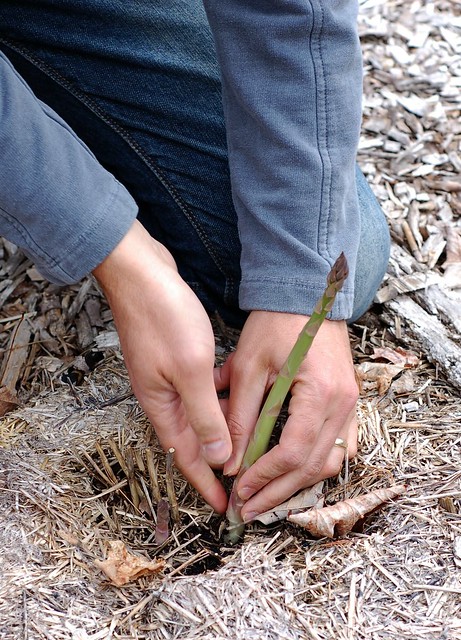 |
| Last year's asparagus crowns are just getting going. Rahm is practically beside himself with excitement! |
You might also like:
Rats
Monday, April 4, 2016
We've been battling a rat problem since last fall. It's decidedly unappetizing.
They tunneled about in the compost bins - sometimes one would pop its almost-cute, little head out of a hole as I dumped the latest bucket of scraps in ("Oh, good, that lazy waitress is finally back!," they were probably thinking...) They wintered in the woodpile - a smart choice since it's cozily protected from the elements and conveniently located right next to the compost. We figured this out when the firewood became increasingly covered in copious amounts of rat droppings (which are a LOT bigger than mouse droppings) that we then had to sweep or knock off before loading it onto the wood cart each time we brought wood inside.
If they'd left it at that, I don't really think we'd have minded but they've also been breaking into the house for months, chewing holes through the dishwasher hoses and the dryer vent to get from the crawlspace into the pantry - where everything is now under lock and key after numerous messy meals that required me to clean the whole room.
But of course it's not just the pantry, it's also the kitchen. They are fond of dragging whole bananas behind the dishwasher for what my husband and I have started to call a "banana party." For some reason, these celebrations get them whipped up into such a frenzy that they have to vent their excitement by chewing through the electrical wires that power the heating element of the dishwasher. It's happened a few times, fortunately, my husband is quite handy.... They also like to pull entire bags of pretzels behind the fridge and steal multiple tomatoes off the counter, somehow smearing them all over the floor in their frenzy. And they don't just come out at night - I have encountered them during the day - bold as brass.
In short, it's been a problem. We think (fingers crossed) that we've finally closed up all of the gaps, cracks and tiny holes that they were using to get inside. You would be amazed at the tiny spaces these creatures can fit through - it's really impressive!
But lately we've been seeing them tunneling and strolling about on the rock wall right behind the house and scurrying alongside the house and along the front deck. One even stood up on its hind legs to look through the glass of the front door the other day.
We've put out some traps (clearly) and killed four in the last week. I was feeling all triumphant about it until I came across this disheartening bit of information in my research:
"Brown rats live in large, hierarchical groups. If a large fraction of a rat population is exterminated, the remaining rats will increase their reproductive rate, and quickly restore the old population level."
To which I can only say, "Well, shit." Not to mention that they're so smart that they've quickly learned to avoid the traps, no matter how alluring the bait we use is.
But we do not want to use poison since it could potentially kill other animals like hawks and coyotes and foxes that could eat the poisoned rats. Judging by how quickly the dead rats I've tossed into the woods have disappeared, they're clearly considered a delicacy. After all, they're raised on a diet of locally-grown, organic food that we've provided :)
A rat terrier would probably do the trick but we really, really do not want a dog. I could not handle having one more messy, hungry, needy being depending on me at this point.
We had been planning to get chickens this spring but are having second thoughts since we already have a rat problem and chickens tend to draw rodents... But we really want chickens! So we're at a bit of an impasse.
Hopefully, this is not too much information for you. I keep thinking about this blog and the seemingly millions of other food-related blogs out there and have decided that I am bored by most blogs and sometimes I am even bored by my own blog.
I am tired of blogs written in a cutesie tone sprinkled with lots of "for realz" and "you betcha"s and emoticons and perfectly posed pictures with stripey straws in them. Not only do I not have time to take perfectly posed photos, I also prefer writing that is honest. Blood and guts and failure and insecurity are all important parts of the human experience. Stripey straws, not so much. Perfect is boring.
So I am going to try to write more about what's really going on and that includes rats - lots of 'em. I will continue to write about food and gardening and the like, of course, but I want to curb my impulse to sugarcoat and sanitize things (though I did spare you the more graphic images of the dead rat in favor of this more genteel, Wicked Witch of the East-style one...)
Feel free to stop reading or unsubscribe if this is not your bag.
You might also like:
They tunneled about in the compost bins - sometimes one would pop its almost-cute, little head out of a hole as I dumped the latest bucket of scraps in ("Oh, good, that lazy waitress is finally back!," they were probably thinking...) They wintered in the woodpile - a smart choice since it's cozily protected from the elements and conveniently located right next to the compost. We figured this out when the firewood became increasingly covered in copious amounts of rat droppings (which are a LOT bigger than mouse droppings) that we then had to sweep or knock off before loading it onto the wood cart each time we brought wood inside.
If they'd left it at that, I don't really think we'd have minded but they've also been breaking into the house for months, chewing holes through the dishwasher hoses and the dryer vent to get from the crawlspace into the pantry - where everything is now under lock and key after numerous messy meals that required me to clean the whole room.
But of course it's not just the pantry, it's also the kitchen. They are fond of dragging whole bananas behind the dishwasher for what my husband and I have started to call a "banana party." For some reason, these celebrations get them whipped up into such a frenzy that they have to vent their excitement by chewing through the electrical wires that power the heating element of the dishwasher. It's happened a few times, fortunately, my husband is quite handy.... They also like to pull entire bags of pretzels behind the fridge and steal multiple tomatoes off the counter, somehow smearing them all over the floor in their frenzy. And they don't just come out at night - I have encountered them during the day - bold as brass.
In short, it's been a problem. We think (fingers crossed) that we've finally closed up all of the gaps, cracks and tiny holes that they were using to get inside. You would be amazed at the tiny spaces these creatures can fit through - it's really impressive!
But lately we've been seeing them tunneling and strolling about on the rock wall right behind the house and scurrying alongside the house and along the front deck. One even stood up on its hind legs to look through the glass of the front door the other day.
We've put out some traps (clearly) and killed four in the last week. I was feeling all triumphant about it until I came across this disheartening bit of information in my research:
"Brown rats live in large, hierarchical groups. If a large fraction of a rat population is exterminated, the remaining rats will increase their reproductive rate, and quickly restore the old population level."
To which I can only say, "Well, shit." Not to mention that they're so smart that they've quickly learned to avoid the traps, no matter how alluring the bait we use is.
But we do not want to use poison since it could potentially kill other animals like hawks and coyotes and foxes that could eat the poisoned rats. Judging by how quickly the dead rats I've tossed into the woods have disappeared, they're clearly considered a delicacy. After all, they're raised on a diet of locally-grown, organic food that we've provided :)
A rat terrier would probably do the trick but we really, really do not want a dog. I could not handle having one more messy, hungry, needy being depending on me at this point.
We had been planning to get chickens this spring but are having second thoughts since we already have a rat problem and chickens tend to draw rodents... But we really want chickens! So we're at a bit of an impasse.
Hopefully, this is not too much information for you. I keep thinking about this blog and the seemingly millions of other food-related blogs out there and have decided that I am bored by most blogs and sometimes I am even bored by my own blog.
I am tired of blogs written in a cutesie tone sprinkled with lots of "for realz" and "you betcha"s and emoticons and perfectly posed pictures with stripey straws in them. Not only do I not have time to take perfectly posed photos, I also prefer writing that is honest. Blood and guts and failure and insecurity are all important parts of the human experience. Stripey straws, not so much. Perfect is boring.
So I am going to try to write more about what's really going on and that includes rats - lots of 'em. I will continue to write about food and gardening and the like, of course, but I want to curb my impulse to sugarcoat and sanitize things (though I did spare you the more graphic images of the dead rat in favor of this more genteel, Wicked Witch of the East-style one...)
Feel free to stop reading or unsubscribe if this is not your bag.
You might also like:
Friday, April 29, 2016
For Healthier Tomato Plants, Save Your Eggshells
Picking a fat, flavorful tomato off the vine in your own garden is one of life's great pleasures. I love to hold them in my hands, feeling the warmth from the sun, sniffing their aromatic smell and feeling their slight stickiness on my skin before I take a bite.
But it's deeply discouraging when the fruits you've pampered for months and are eagerly anticipating eating begin to turn brown and rot from their tips upwards. It's called blossom end rot and is a common and easily prevented tomato ailment.
Blossom end rot is caused by a calcium deficiency which is good news, because, unlike many other tomato woes, you can avoid it.
One very simple way to protect your plants is to place a bit of crushed up eggshell in the hole before you put your tomato plant in and fill the dirt in around it. I suggest you start saving your eggshells NOW.
I'm keeping mine in a jar next to the sink to remind me not to toss them into the compost bucket and so far, it's working. You can also just put them back into the carton if you prefer. If you use a jar, leave it open to let them dry out.
When the time comes to plant your 'maters, just crush them up and pour a little into the bottom of the hole then proceed as usual. Thanks to my friend, Grian, for sharing this wonderful tip about the eggshells. More about Grian and her incredible garden here.
A few more tomato-growing tips:
1. Do not grow tomatoes in the same place more than once every three years (or longer). Rotating beds will help prevent problems from diseases like wilts and blights build up in the soil. You should also avoid planting any potatoes, eggplant, tomatillos, and chili and bell peppers in that location as they are all members of the same family of Nightshades and are also susceptible to the same pests. A good rotation would be to plant tomatoes in year one then move on to a brassica crop (cabbage, cauliflower, broccoli or brussels sprouts) the second year then some kind of beans to add nitrogen back to the soil in the third year and then an allium like onion, shallot, leek or scallion the four year. Then back to tomatoes or some other nightshade.
2. Go easy on the nitrogen. Unlike some plants, tomatoes do not need a ton of nitrogen. Too much can burn them or cause them to put out lush foliage but not many tomatoes - all leaf and no fruit. If you're using a bagged soil mix, look for one that is specifically formulated for tomatoes with higher amounts of phosphorus than nitrogen.
3. Err on the side of less water rather than more. Tomatoes are sensitive to over-watering and do quite well with very little water. In fact, some of the most delicious tomatoes I have ever eaten are the dry-farmed early girls we used to buy at the Berkeley Farmers' Market - the lack of water causes the plants to really concentrate flavors and sugars. Rather than sprinkling them every day, do a deep watering once or twice a week (depending on the weather, that is) to allow the water to get down to the roots where they can suck it up as needed.
4. Don't let dirt splash the plants. If you can rig one up, water your tomatoes via drip irrigation as that way you will avoid splashing the bacteria and fungus in the soil up onto the leaves where they can wreak havoc. If you can't hack a drip system (and most people can't), simply strip off the lower leaves and branches from your plants to avoid the so-called "ladder effect" of bacteria and fungus in the soil splashing up on the plants and infecting the leaves.
5. Pinch off any suckers. You'll get stronger, bushier plants and larger tomatoes if you pinch off any suckers that begin to grow up out of the crotch between the main stem and the branches coming off it. Some kinds of tomato plants can handle more aggressive pinching at various stages, as well but it depends on the type you're growing and what stage of growth the plant is in.
You might also like:
Monday, April 25, 2016
Snapping Turtle In the Garlic!
I promise I will post a recipe soon but in the meantime, our latest wildlife spotting was too good not to share.
The other morning, I was out in the garden with James, my three-year-old, when I noticed that something had been digging in the raised bed we planted with garlic last fall. It's not unusual for a squirrel or chipmunk to wreak havoc but when I took a closer look, I noticed that the dirt was all mounded up - like someone had added a couple shovels full to it.
That's when I saw a large reptilian head nestled in the soft, brown earth. My first thought was, "Is that an IGUANA?!" and then I quickly realized that it was a snapping turtle.
I grew up next to a pond here in upstate New York so I have long experience with these fierce creatures. Snapping turtles (Chelydra serpentina) are native to this area and are known for their fierce, even combative dispositions. I once tried to help one across the road to prevent it from getting run over. Once.
I used a stick to prod it gently from behind but it whipped its head around and shot it's neck out about a foot at me with a vicious snap of its jaws. I dropped the stick and decided I'd just let it take its chances on the road. So when I found this fine old lady getting ready to lay a clutch of eggs in our garden, I quickly moved both kids to higher ground because their behavior around parking lots indicates that their instinct for self-preservation is a tad underdeveloped.
Her first response to our presence was to dig herself deeper into the dirt. An understandable reaction but not ideal from our point of view -- the last thing we need is dozens of baby snappers hatching out of our garlic and then coming back every year to lay their own eggs...
Unfortunately, moving a snapping turtle is not the easiest task. They are large, heavy and, unlike, most animals, they do not run from a threat. Instead, they prefer to turn and face it head on. So every time I would try to prod her forward with my long stick, she'd turn herself around and snap at the stick. She also let out a low, loud hiss that got her point across in no uncertain terms and gave me shivers. What a magnificent, scary beastie!
Eventually, we managed to prod/lift her out of the raised bed and get her onto a shovel.
Then Rahm kind of gently shoveled her into this plastic garden cart I had laid down in front of her and tipped it back up, trapping her neatly inside.
Then he dragged her out of the garden to a marshy area on our property that is back in the direction of the pond next door.
We will be adding some additional fencing to the part of the garden where she came in as we'd prefer not to have her back again and would also hate to waste her time when she could be finding a more hospitable location for her nursery. The incident left a bit of a mess but we replanted the garlic and are hoping it will make a full recovery.
Although this was a bit too close for comfort for my taste, especially with the small humans running around, I will note that the boys were DELIGHTED by the whole incident. So much better than watching Nature shows on PBS (though we like those, too.) Naturally, I looked them up when I got inside. Here are my favorite snapper facts:
You might also like:
The other morning, I was out in the garden with James, my three-year-old, when I noticed that something had been digging in the raised bed we planted with garlic last fall. It's not unusual for a squirrel or chipmunk to wreak havoc but when I took a closer look, I noticed that the dirt was all mounded up - like someone had added a couple shovels full to it.
That's when I saw a large reptilian head nestled in the soft, brown earth. My first thought was, "Is that an IGUANA?!" and then I quickly realized that it was a snapping turtle.
I grew up next to a pond here in upstate New York so I have long experience with these fierce creatures. Snapping turtles (Chelydra serpentina) are native to this area and are known for their fierce, even combative dispositions. I once tried to help one across the road to prevent it from getting run over. Once.
I used a stick to prod it gently from behind but it whipped its head around and shot it's neck out about a foot at me with a vicious snap of its jaws. I dropped the stick and decided I'd just let it take its chances on the road. So when I found this fine old lady getting ready to lay a clutch of eggs in our garden, I quickly moved both kids to higher ground because their behavior around parking lots indicates that their instinct for self-preservation is a tad underdeveloped.
Her first response to our presence was to dig herself deeper into the dirt. An understandable reaction but not ideal from our point of view -- the last thing we need is dozens of baby snappers hatching out of our garlic and then coming back every year to lay their own eggs...
Unfortunately, moving a snapping turtle is not the easiest task. They are large, heavy and, unlike, most animals, they do not run from a threat. Instead, they prefer to turn and face it head on. So every time I would try to prod her forward with my long stick, she'd turn herself around and snap at the stick. She also let out a low, loud hiss that got her point across in no uncertain terms and gave me shivers. What a magnificent, scary beastie!
Eventually, we managed to prod/lift her out of the raised bed and get her onto a shovel.
Then Rahm kind of gently shoveled her into this plastic garden cart I had laid down in front of her and tipped it back up, trapping her neatly inside.
Then he dragged her out of the garden to a marshy area on our property that is back in the direction of the pond next door.
We will be adding some additional fencing to the part of the garden where she came in as we'd prefer not to have her back again and would also hate to waste her time when she could be finding a more hospitable location for her nursery. The incident left a bit of a mess but we replanted the garlic and are hoping it will make a full recovery.
Although this was a bit too close for comfort for my taste, especially with the small humans running around, I will note that the boys were DELIGHTED by the whole incident. So much better than watching Nature shows on PBS (though we like those, too.) Naturally, I looked them up when I got inside. Here are my favorite snapper facts:
- They look ancient because they are. Snapping turtles have been around in more or less the same form for 40 million years and used to hang with the dinosaurs (no relation).
- They keep growing as long as they're alive and can get up to at least 75 pounds in the wild (heavier in captivity). They can live to at least 100 and one thing I read said they can live until 170 years by which time they must be the size of a small car.
- They do not reach sexual maturity until they are between 12-20 years old - the further north you go, the longer it takes them to mature. That means the mom we met was probably at least 15 years old.
- The sex of the baby turtles is determined by the temperature in the nest. Eggs maintained at 68°F produce only females; eggs maintained at 70-72°F produce both male and female turtles; and those incubated at 73-75°F produce only males.
- Do not ever pick up a snapping turtle (or any turtle) by its tail - you can do serious damage to it's vertebrae and spinal column (you can also get bitten). A good rule of thumb is not to pick up a snapping turtle... But if you do need to for some unimaginable reason, you can most safely (for you and the turtle) grab it underneath its carapace, above its back legs. Beware the head - they can really whip that thing around far.
- The snapping turtle has been the state reptile of New York since 2006 - who knew?!
- Lest you are thinking about bringing one home, I will leave you with my favorite sentence from the Wikipedia entry on snapping turtles, "The common snapping turtle is not an ideal pet." I actually laughed out loud when I came to it.
You might also like:
Friday, April 22, 2016
Responsible Ramp Harvesting
It's been five years since I first went ramp foraging and although I still love this wonderful, wild delicacy, my approach has changed dramatically.
In light of the fact that these slow-growing, wild plants are quickly being wiped out by our voracious appetite for them, I no longer dig up whole plants. Instead, I snip a single leaf from each plant. Just as delicious and a whole lot more sustainable.
So if you are lucky enough to find a patch of wild ramps, please treat them with the respect they deserve. And it's probably best if you do not tell anyone else about them, lest they fail to act with restraint.
In addition, it would be helpful if you do not purchase whole ramps at grocery stores, specialty shops, restaurants, etc., since doing so simply feeds the problem.
Instead, talk to the shop owner, chef, etc., to gently express your concern and encourage them to stop using whole ramps and instead work only with providers who they know harvest responsibly (leaves only!)
I was so pleased to see this sign at Adams, a local supermarket today!
This does not mean you cannot continue to enjoy ramps! I certainly plan to... Below are some ways you might like them and here is a whole book of good ways to enjoy them (cover photo by yours truly).
Please consider planting some ramps of your own if you have the right type of land for them. Ramps favor sandy, moist soils and are often found near streams though you might also find them carpeting the forest floor where beech, birch, poplar and/or sugar maple trees are found. You can order seeds or bulbs (seeds are cheaper, bulbs are faster) from The Ramp Farm in West Virginia. We have done both as well as transplanting a few plants from the woods and our little patch is thriving.
You might also like:
Tuesday, April 19, 2016
What's Happening Around Here Lately
Today is my birthday. Our older son had been home sick with a bad flu for almost a week but was finally well enough to go to school this morning. So I've been soaking up the quiet and enjoying the flood of sweet b-day wishes via email, Facebook and phone. My favorite one so far is from my friend, Syed who posted, "Look at you, older and ornerier" on my Facebook page :)
I've been sick since last week, too, and when I caught a glimpse of my face in the mirror in between nose blows and coughs this morning, I thought, "So this is 39 - it's not pretty..." But, as they say, "It's all good," since I have, thankfully, not built my life around being young or beautiful. I find that I also like both myself and my life more and more as I get older. I wouldn't trade 39 for 19 or 29 or any other age.
And I'm not the only one greeting a brand new year. A whole lot of other living things are getting in the spirit around here. Since a picture is worth a thousand words, here are a few to show you some of the lovely things popping up at our house this Spring.
Also, I'm probably jinxing it by writing this but I have not seen a rat since I wrote that last post. It probably won't last but it sure is nice while it does.
 |
| A pair of robins built this beautiful nest from mud, straw and twigs, then abandoned it for some reason. |
 |
| Last year's asparagus crowns are just getting going. Rahm is practically beside himself with excitement! |
You might also like:
Monday, April 4, 2016
Rats
We've been battling a rat problem since last fall. It's decidedly unappetizing.
They tunneled about in the compost bins - sometimes one would pop its almost-cute, little head out of a hole as I dumped the latest bucket of scraps in ("Oh, good, that lazy waitress is finally back!," they were probably thinking...) They wintered in the woodpile - a smart choice since it's cozily protected from the elements and conveniently located right next to the compost. We figured this out when the firewood became increasingly covered in copious amounts of rat droppings (which are a LOT bigger than mouse droppings) that we then had to sweep or knock off before loading it onto the wood cart each time we brought wood inside.
If they'd left it at that, I don't really think we'd have minded but they've also been breaking into the house for months, chewing holes through the dishwasher hoses and the dryer vent to get from the crawlspace into the pantry - where everything is now under lock and key after numerous messy meals that required me to clean the whole room.
But of course it's not just the pantry, it's also the kitchen. They are fond of dragging whole bananas behind the dishwasher for what my husband and I have started to call a "banana party." For some reason, these celebrations get them whipped up into such a frenzy that they have to vent their excitement by chewing through the electrical wires that power the heating element of the dishwasher. It's happened a few times, fortunately, my husband is quite handy.... They also like to pull entire bags of pretzels behind the fridge and steal multiple tomatoes off the counter, somehow smearing them all over the floor in their frenzy. And they don't just come out at night - I have encountered them during the day - bold as brass.
In short, it's been a problem. We think (fingers crossed) that we've finally closed up all of the gaps, cracks and tiny holes that they were using to get inside. You would be amazed at the tiny spaces these creatures can fit through - it's really impressive!
But lately we've been seeing them tunneling and strolling about on the rock wall right behind the house and scurrying alongside the house and along the front deck. One even stood up on its hind legs to look through the glass of the front door the other day.
We've put out some traps (clearly) and killed four in the last week. I was feeling all triumphant about it until I came across this disheartening bit of information in my research:
"Brown rats live in large, hierarchical groups. If a large fraction of a rat population is exterminated, the remaining rats will increase their reproductive rate, and quickly restore the old population level."
To which I can only say, "Well, shit." Not to mention that they're so smart that they've quickly learned to avoid the traps, no matter how alluring the bait we use is.
But we do not want to use poison since it could potentially kill other animals like hawks and coyotes and foxes that could eat the poisoned rats. Judging by how quickly the dead rats I've tossed into the woods have disappeared, they're clearly considered a delicacy. After all, they're raised on a diet of locally-grown, organic food that we've provided :)
A rat terrier would probably do the trick but we really, really do not want a dog. I could not handle having one more messy, hungry, needy being depending on me at this point.
We had been planning to get chickens this spring but are having second thoughts since we already have a rat problem and chickens tend to draw rodents... But we really want chickens! So we're at a bit of an impasse.
Hopefully, this is not too much information for you. I keep thinking about this blog and the seemingly millions of other food-related blogs out there and have decided that I am bored by most blogs and sometimes I am even bored by my own blog.
I am tired of blogs written in a cutesie tone sprinkled with lots of "for realz" and "you betcha"s and emoticons and perfectly posed pictures with stripey straws in them. Not only do I not have time to take perfectly posed photos, I also prefer writing that is honest. Blood and guts and failure and insecurity are all important parts of the human experience. Stripey straws, not so much. Perfect is boring.
So I am going to try to write more about what's really going on and that includes rats - lots of 'em. I will continue to write about food and gardening and the like, of course, but I want to curb my impulse to sugarcoat and sanitize things (though I did spare you the more graphic images of the dead rat in favor of this more genteel, Wicked Witch of the East-style one...)
Feel free to stop reading or unsubscribe if this is not your bag.
You might also like:
They tunneled about in the compost bins - sometimes one would pop its almost-cute, little head out of a hole as I dumped the latest bucket of scraps in ("Oh, good, that lazy waitress is finally back!," they were probably thinking...) They wintered in the woodpile - a smart choice since it's cozily protected from the elements and conveniently located right next to the compost. We figured this out when the firewood became increasingly covered in copious amounts of rat droppings (which are a LOT bigger than mouse droppings) that we then had to sweep or knock off before loading it onto the wood cart each time we brought wood inside.
If they'd left it at that, I don't really think we'd have minded but they've also been breaking into the house for months, chewing holes through the dishwasher hoses and the dryer vent to get from the crawlspace into the pantry - where everything is now under lock and key after numerous messy meals that required me to clean the whole room.
But of course it's not just the pantry, it's also the kitchen. They are fond of dragging whole bananas behind the dishwasher for what my husband and I have started to call a "banana party." For some reason, these celebrations get them whipped up into such a frenzy that they have to vent their excitement by chewing through the electrical wires that power the heating element of the dishwasher. It's happened a few times, fortunately, my husband is quite handy.... They also like to pull entire bags of pretzels behind the fridge and steal multiple tomatoes off the counter, somehow smearing them all over the floor in their frenzy. And they don't just come out at night - I have encountered them during the day - bold as brass.
In short, it's been a problem. We think (fingers crossed) that we've finally closed up all of the gaps, cracks and tiny holes that they were using to get inside. You would be amazed at the tiny spaces these creatures can fit through - it's really impressive!
But lately we've been seeing them tunneling and strolling about on the rock wall right behind the house and scurrying alongside the house and along the front deck. One even stood up on its hind legs to look through the glass of the front door the other day.
We've put out some traps (clearly) and killed four in the last week. I was feeling all triumphant about it until I came across this disheartening bit of information in my research:
"Brown rats live in large, hierarchical groups. If a large fraction of a rat population is exterminated, the remaining rats will increase their reproductive rate, and quickly restore the old population level."
To which I can only say, "Well, shit." Not to mention that they're so smart that they've quickly learned to avoid the traps, no matter how alluring the bait we use is.
But we do not want to use poison since it could potentially kill other animals like hawks and coyotes and foxes that could eat the poisoned rats. Judging by how quickly the dead rats I've tossed into the woods have disappeared, they're clearly considered a delicacy. After all, they're raised on a diet of locally-grown, organic food that we've provided :)
A rat terrier would probably do the trick but we really, really do not want a dog. I could not handle having one more messy, hungry, needy being depending on me at this point.
We had been planning to get chickens this spring but are having second thoughts since we already have a rat problem and chickens tend to draw rodents... But we really want chickens! So we're at a bit of an impasse.
Hopefully, this is not too much information for you. I keep thinking about this blog and the seemingly millions of other food-related blogs out there and have decided that I am bored by most blogs and sometimes I am even bored by my own blog.
I am tired of blogs written in a cutesie tone sprinkled with lots of "for realz" and "you betcha"s and emoticons and perfectly posed pictures with stripey straws in them. Not only do I not have time to take perfectly posed photos, I also prefer writing that is honest. Blood and guts and failure and insecurity are all important parts of the human experience. Stripey straws, not so much. Perfect is boring.
So I am going to try to write more about what's really going on and that includes rats - lots of 'em. I will continue to write about food and gardening and the like, of course, but I want to curb my impulse to sugarcoat and sanitize things (though I did spare you the more graphic images of the dead rat in favor of this more genteel, Wicked Witch of the East-style one...)
Feel free to stop reading or unsubscribe if this is not your bag.
You might also like:


